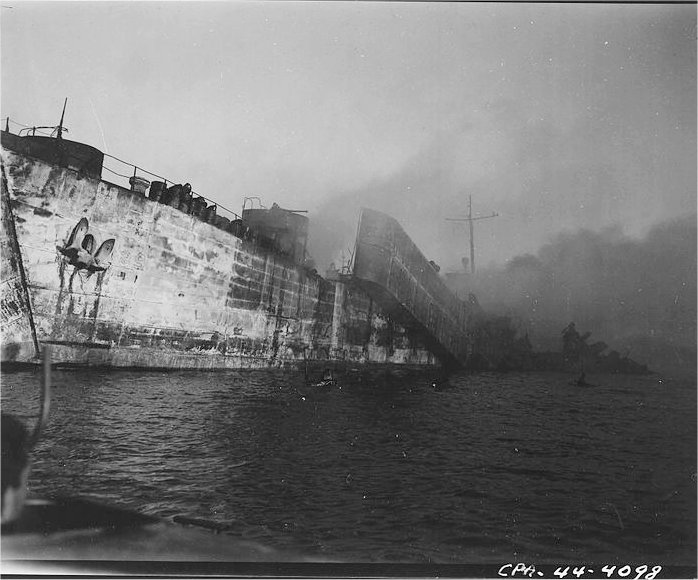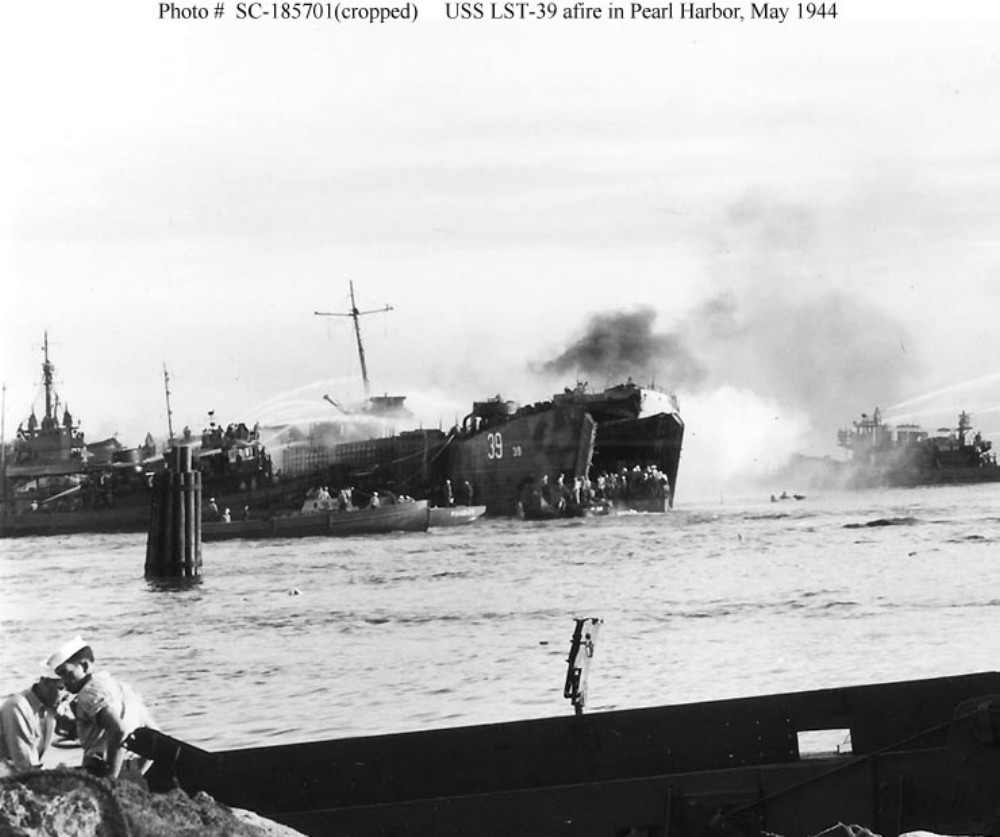During ancient times, various land divisions were used to divide and identify areas of control. Islands were divided into moku; moku were divided into ahupuaʻa. A common feature in each ahupuaʻa was water, typically in the form of a stream or spring.
The Island of O’ahu had six Moku: Kona, Koʻolaupoko, Koʻolauloa, Waialua, Waiʻanae and ʻEwa.
‘Ewa was divided into 12-ahupua‘a, consisting of (from east to west): Hālawa, ‘Aiea, Kalauao, Waimalu, Waiau, Waimano, Mānana, Waiʻawa, Waipi‘o, Waikele, Hōʻaeʻae and Honouliuli.
All water sources in each of the twelve ahupuaʻa of ʻEwa met in Puʻuloa. This was the only moku in all the islands where all waters from its ahupuaʻa did this.
In Hawaiian traditions, Pu‘uloa in ‘Ewa consists of three distinct awalau, or lochs, including Kaihuopala‘ai (West Loch), Wai‘awa (Middle Loch) and Komoawa (East Loch).
In addition to being known for producing high-quality awa (milkfish or mullet), ‘Ewa’s fishponds were also famed for deep-sea fish such as akule (scad varieties), as attested to by the name of one its fishponds (Ka-pa-akule, or “the-akule-enclosure”) in Honouliuli. (KSBE)
Researchers have estimated there were 488 fishponds across the Hawaiian islands prior to contact with westerners. An inventory in 1901 identified 360 fishponds, only 99 of which were active, with an estimated annual production of about 486,000 pounds of ʻamaʻama and 194,000 pounds of awa.
Fishponds disappeared dramatically during the twentieth century. Westernization, development, and changes in land use, especially the spread of invasive mangrove and sediment accumulation from lack of management were the biggest factors, but fishponds were also lost to lava flows and tsunamis. (McDaniel)
“The salient feature of ‘Ewa, and perhaps its most notable point of difference [compared with other districts], is its spacious coastal plain, surrounding the deep bays (“lochs”) of Pearl Harbor, which are actually the drowned seaward valleys of ‘Ewa’s main streams, Waikele and Waipi‘o.”
“The Hawaiian name for Pearl Harbor was Ke-awa-lauo-Pu‘uloa, The-many (lau)-harbors (awa)-of-Pu‘uloa. Pu‘uloa was the rounded area projecting into the sea at the long narrow entrance of the harbor [referring to Waipi‘o peninsula].”
“Another and more poetic name was Awawa-lei, Garland (lei)-of-harbors. The English name “Pearl” was given to it because of the prevalence of pearl oysters (pipi) in the deep harbor waters.”
“These bays offered the most favorable locality in all of the Hawaiian Islands for the building of fishponds and fish traps into which deep-sea fish came on the inflow of tidal waters.” (Handy & Handy, KSBE)
Over the years, Ke Awa Lau O Puʻuloa (Pearl Harbor) has changed dramatically. When the first Westerner, British seafarer Captain James Cook, came to the islands in 1778, a coral reef barred the entrance of the place known as Wai Momi, making it unsuitable as a port for deep-draft shipping. At that time, nearby Honolulu Harbor was an infinitely more hospitable destination.
It wasn’t until 1826 that the US Navy had its first contact with the Hawaiian Islands, when the schooner USS Dolphin sailed into port. After that, it took more than 13 years for the Navy to begin to recognize the potential of Pearl Harbor.
During a routine survey of the area in 1840, an enterprising naval officer determined that the deep inner harbor could be accessed by completely removing the obstructing reef.
As a means of solidifying a site in the central Pacific, the US negotiated an amendment to the Treaty of Reciprocity in 1887. King Kalākaua in his speech before the opening session of the 1887 Hawaiian Legislature stated (November 3, 1887:)
“I take great pleasure in informing you that the Treaty of Reciprocity with the United States of America has been definitely extended for seven years upon the same terms as those in the original treaty …”
“… with the addition of a clause granting to national vessels of the United States the exclusive privilege of entering Pearl River Harbor and establishing there a coaling and repair station.”
“This has been done after mature deliberation and the interchange between my Government and that of the United States of an interpretation of the said clause …”
“… whereby it is agreed and understood that it does not cede any territory or part with or impair any right of sovereignty or jurisdiction on the part of the Hawaiian Kingdom and that such privilege is coterminous with the treaty.”
“I regard this as one of the most important events of my reign, and I sincerely believe that it will re-establish the commercial progress and prosperity which began with the Reciprocity Treaty.” (Kalākaua)
Despite gaining exclusive rights to Pearl Harbor in 1887, the US did not make any attempt to take advantage of their claim on this strategic estuary until well after the turn of the century.
It wasn’t until the capture of Manila during the Spanish-American War, when the US needed to establish a permanent way station in the Pacific to maintain control of the Philippines.
Then, for the first time, the American government began to understand the strategic importance of O‘ahu. Annexation soon followed, but even then, little was done to fortify the area or capitalize on the vast potential of Pearl Harbor.
Finally, beginning in 1902, the entry channel was dredged, deepened, and widened to clear an opening at the entrance of the Harbor. Congress did not officially create a naval base at Pearl Harbor until 1908. (NPS)
“Cutting the channel through the reef that has for so many years closed Pearl Harbor to navigation, is a task so quietly and withal so speedily done, that half the people of Honolulu have come to think of the great work in that section of the island as a part of the day’s routine.”
“What effect this new harbor will have on the future events of the world no one can exactly forecast. But we do know that this harbor will be a pivotal point about which great incidents of the world’s history will revolve.”
“Pearl Harbor will be the assembling place for great fleets of warships. Let us hope that never during the present century will these fleets be called upon to go forth to battle, but whether they do or not, may they at all times be the barrier of protection for an ever-increasing American influence and an ever-expanding American commerce carried in American merchant ships.” (Evening Bulletin, December 14, 1911)
“Upon the completion of the dredging operations of Pearl Harbor bar, December 14, 1911, an official entry into the lochs was made by Rear Admiral Thomas in the flagship California, Captain Harlow, and the occasion of joyful recognition of the important event, the end of a great work.” (Thrum, 1912)
Historical and archaeological studies reveal that more than 20 ancient Hawaiian fishponds once lined the shores of Pearl Harbor. Core samples indicate that many of Pearl Harbor’s fishponds were in use sometime after the 1400s. Others were constructed between the 16th and late 19th centuries.
Unknown elsewhere in Polynesia, shoreline fishponds made of rock or coral walls are considered to be a highly-effective food production invention of the native Hawaiian people. (Navy)
Traditional accounts indicate several of the fishponds in the Puʻuloa area were believed to have been constructed by Kāne and Kanaloa. Directing the menehune, they made the pond Kapākule (aka Pākule,) which they stocked with all manner of fish. (Kumupono, Hoakalei)
“On the left side of [Kapākule] pond stood the stone called Hina, which represented a goddess of the sea by that name. Each time the sea ebbed, the rock became gradually visible, vanishing again under water at high tide. Ku, another stone on the right, was never seen above sea level. This stone represented Ku’ula, Red Ku, a god of fish and fishermen. (Pukui)
Two or three of Pearl Harbor’s fishponds remain visible today. The rest generally were filled by agricultural development in the area in the early 1900s, predominantly for sugar cane cultivation.
Loko Oki‘oki‘olepe, near the entrance to West Loch on the west side of the entrance channel, is listed on the National Register of Historic Places. The pond wall, approximately 1,000 feet long, 4 feet high and 6.5 feet wide, is made of coral chunks and remains relatively intact. It encloses approximately six acres.
A remnant from Loko Pa‘aiau, given a date of between 1327 and 1473 AD based on plant pollen found in sediment core samples, can be seen on the west side of McGrew Point. Two ponds, Loko Kunana and Loko Muliwai, were filled, creating Kuahua Peninsula to the south of where Halawa Stream enters Pearl Harbor.
The largest pond, Loko Hanaloa, on Waipio Peninsula, emptied into West Loch and covered more than 200 acres. Other smaller ponds were in front of Joint Base Pearl Harbor-Hickam’s Boutiki store, at the head of Merry Loch under today’s Ward Field, and at the head of Quarry Loch under today’s Millican Field. (Navy)



















